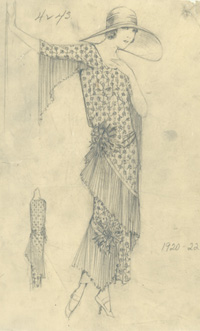 |
||||||
4. The Bottom Line |
With the continued growth of high capitalism in the 19th century, new industries of advertising and marketing emerged. Catalogues, sample books, and forecasting materials were and remain important tools of the fashion industry. Special Collections has a wide assortment of catalogues, including an extremely rare set of Whittingham & Humphreys. From around 1891 until 1912, this dressmaker produced 32 volumes of exquisitely detailed, hand-rendered drawings in pencil and ink of the current fashionable styles. Special Collections also houses wonderful sample books—trade publications that include fabric swatches alongside illustrations of the current fashions. Scotch Woolen Mills was one of countless firms that produced large quantities of inexpensive clothing for mail-order catalogues to sell. In the cycle of ready-to-wear production, retailers could not always be certain which fashions would be successful. As a result, a new field developed to navigate between the fashion industry and the consumer—fashion forecasting and trend reporting. Mademoiselle Shoe Company, a 1940s forecasting firm, and Cahiers bleus, a French color forecasting guide, provided seasonal guides for color and fabrics as tools for the apparel industries. Today this type of business guide constitutes one of the most essential references for the fashion industry and has become stylish in design and layout.
|
|||||
